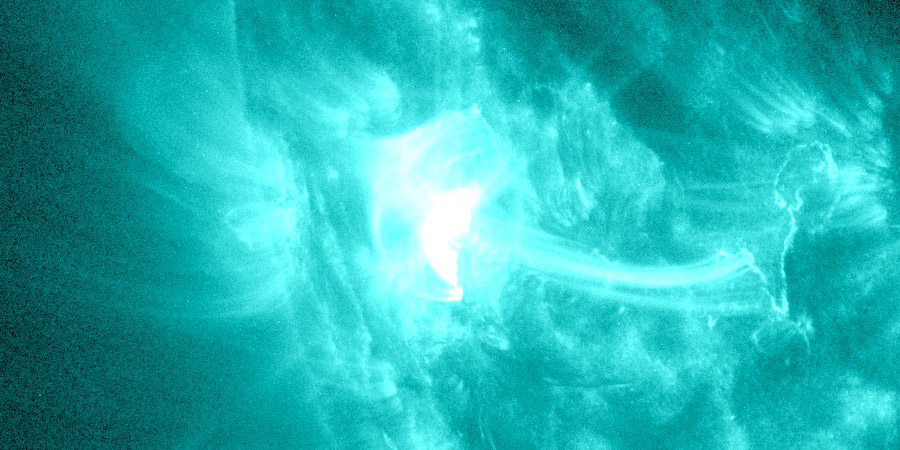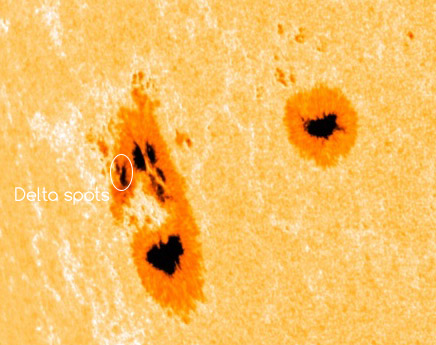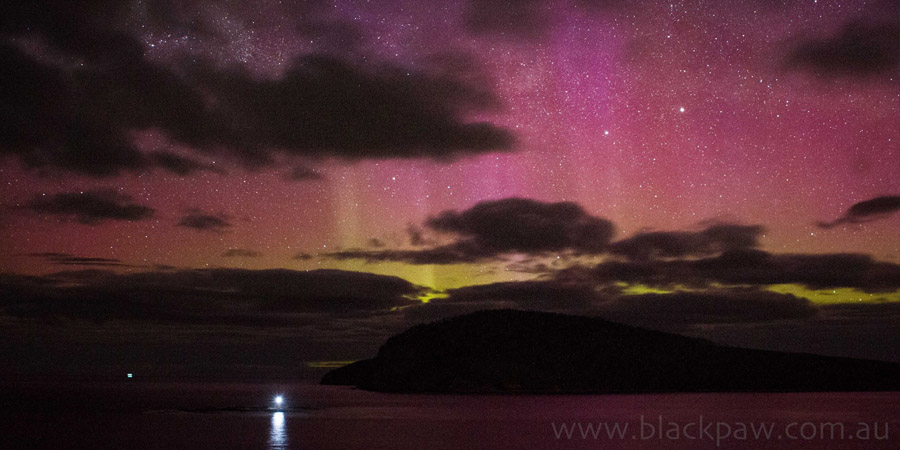Sunspot region 2209, auroral activity
Saturday, 15 November 2014 14:53 UTC

Solar activity increased to moderate levels thanks to an impulsive M3.3 solar flare (R1-minor) from sunspot region 2209 (which was sunspot region 2192 during the previous rotation) at 12:03 UTC. Additional sunspots rotated into view over the past few days and while old sunspot region 2192 is not as large anymore as it once was, it still has some magnetic complexity. We will also take a look at the current geomagnetic conditions and what to expect in the coming days. A coronal hole high speed stream is set to arrive tomorrow and might bring G1 geomagnetic storm conditions.
Sunspot region 2209
Sunspot region 2192 (now 2209) is back and it is active! It produced an impulsive M3.3 solar flare (R1-minor) at 12:03 UTC.
Strong M3.3 solar #flare - Follow live on http://t.co/8JIfkaXUPc pic.twitter.com/LGWdlVQzkD
— SpaceWeatherLive (@_SpaceWeather_) 15 november 2014
The solar flare did not look eruptive and it is likely that there was no coronal mass ejection associated with this event. We also have to note that sunspot region 2209 is still close to the east limb which means that any eruptions will likely not be earth-directed for at least the coming 3 days.
If we compare sunspot region 2209 with how it looked like during the previous rotation, it seems that only the most eastern part and the larger leader spot survived. In the latest SDO imagery we still see faculae remnants of the smaller sunspots with only the largest spots that survived.
But is not all bad news! It still has a magnetically complex sunspot layout with two delta spots visible in the most eastern part of the cluster.

More M-class solar flares are possible but we don't have a good view yet at the moment on how sunspot region 2209 is evolving. Is is stable, in decay or perhaps gaining new spots? That is the question we will try to answer in the coming 24 hours but as long as the two delta sunspots remain where they are, there is a chance for more M-class (R1-R2) activity in the next 24 hours.
M-class flare probability for the coming 24 hours: 30% chance
X-class flare probability for the coming 24 hours: 5% chance
All the other sunspot regions on the disk are unremarkable and unlikely to produce strong solar flares. Any future solar flares will very likely be centered around sunspot region 2209.
Auroral activity
Auroral activity is slightly elevated thanks to continuing coronal hole high speed stream effects. The Kp-index has been ranging from Kp2 to Kp4 during the past 24 hours. Aurora were seen from many high latitude locations including Tasmania where the image below was taken by Blackpaw Photography.

It is not over yet with these enhanced conditions as we are expecting another coronal hole high speed steam to arrive tomorrow. This stream would originate from a northern hemisphere coronal hole that extends all the way onto the sun's equator. The NOAA SWPC has put out a warning for possible minor G1 geomagnetic storm conditions tomorrow. High latitude sky watchers should remain alert for possible auroral outbreaks in the days ahead.

Images: NASA SDO and Blackpaw Photography.
Thank you for reading this article! Did you have any trouble with the technical terms used in this article? Our help section is the place to be where you can find in-depth articles, a FAQ and a list with common abbreviations. Still puzzled? Just post on our forum where we will help you the best we can!
Latest news
Latest forum messages
Support SpaceWeatherLive.com!
A lot of people come to SpaceWeatherLive to follow the Sun's activity or if there is aurora to be seen, but with more traffic comes higher server costs. Consider a donation if you enjoy SpaceWeatherLive so we can keep the website online!

Space weather facts
| Last X-flare | 2024/12/08 | X2.2 |
| Last M-flare | 2024/12/23 | M8.9 |
| Last geomagnetic storm | 2024/12/17 | Kp5+ (G1) |
| Spotless days | |
|---|---|
| Last spotless day | 2022/06/08 |
| Monthly mean Sunspot Number | |
|---|---|
| November 2024 | 152.5 -13.9 |
| December 2024 | 106.6 -45.9 |
| Last 30 days | 114.4 -44.3 |


